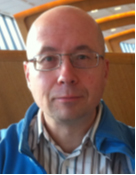各位老师、同学:
大家好,等离子体物理与材料实验室邀请到国际著名教授Kostya (Ken) Ostrikov来我校做学术报告,Kostya (Ken) Ostrikov教授是欧洲科学院(The Academy of Europe)院士,澳大利亚国家科学机构联邦科学与工业研究组织(CSIRO)首席科学家,昆士兰理工大学等离子体纳米科学领域的教授。Kostya (Ken) Ostrikov教授讲话富有激情,诙谐幽默,极富感染力,欢迎感兴趣的老师和同学参加讲座并现场互动。
报告题目:New directions in Plasma Nanoscience: from plasma-nano-catalysis and sustainable nanotech to nano-plasmas
报告时间:2015.12.14(周一)上午9:30-11:30
报告地点:研究院一楼会议室
------------------------------------------------------------------------------------------
附:报告内容摘要及Kostya (Ken) Ostrikov 教授个人简介
In this talk, I will focus on recent new research directions in the Plasma Nanoscience field, specifically:
1) Plasma-nano-catalysis [1];
2) Sustainable, green-chemistry based nanotechnology; and
3) Nano-plasmas generated by intense radiation [2].
In each area, as common to research in the Plasma Nanoscience field, plasma-specific effects and phenomena will be the main points for discussion. For example, in area 1) I will provide some examples of synergistic actions of low-temperature plasmas and nanometer-sized (mostly) inorganic catalysts that lead to value-added products. In area 2), I will introduce the sustainable life-cycles of natural-resource-derived plasma-made nanomaterials, focusing in particular on those effects that help reforming nature-derived precursors into functional nanomaterials. Some of the examples of such nanomaterials include graphenes for energy storage or environmental sensing devices. In area 3), I will pose a fundamental question if it is feasible to reduce the size of plasmas, the fourth state of matter, to the nanoscale and will discuss the physical limitations on the way to achieve nano-plasmas as well as the effective means to overcome such limitations. The mechanisms for the production of transient, highly-non-equilibrium nanoplasmas are introduced. Some of the interesting effects that arise due to the nanoscale plasma-surface interactions and the interesting properties of the nanostructures [3,4] in relevant cases are discussed. These interactions can be enabled by low-pressure and atmospheric-pressure plasma discharges. Selected recent environmental and energy applications of functional nano-materials produced using plasmas are summarized in Ref. [4].
[1] E. C. Neyts, K. Ostrikov, M. K. Sunkara, and A. Bogaerts, Chem. Rev. (2016). DOI: : 10.1021/acs.chemrev.5b00362
[2] K. Ostrikov, F. Beg, and A. Ng, Rev. Mod. Phys. (2016) https://journals.aps.org/rmp/accepted/dd075E70He0E2412102a1ff0cbb88e03b2d105e65
[3] K. Ostrikov, E. C. Neyts, and M. Meyyappan, Adv. Phys. 62, 113 (2013)
[4] Z. Bo, S. Mao, Z. J. Han, K. F. Cen, J. H. Chen, and K. Ostrikov, Chem. Soc. Rev. 44, 2108 (2015)
Biography
Kostya (Ken) Ostrikov is a Science Leader of the Office of Chief Executive with CSIRO, and a Professor with Queensland University of Technology, Australia. His achievements include Pawsey (2008) medal of Australian Academy of Sciences, Walter Boas (2010) medal of Australian Institute of Physics, Building Future Award (2012), NSW Science and Engineering Award (2014), election to the Academy of Europe (2015), 6 prestigious fellowships in 6 countries, several patents, 3 monographs, and 470 journal papers. His research on nanoscale control of energy and matter contributes to the solution of the grand challenge of directing energy and matter at nanoscales, to develop renewable energy and energy-efficient technologies for a sustainable future.

